By Joe Anderson, Utility Forester, JEA
*Editorial Note: The following article appeared in the the September/October 2021 issue of the UAA Newsline.
Utility: the state of being useful, profitable, or beneficial. By definition, trees are a valued utility built into the framework of a city’s working infrastructure. The term “green infrastructure” applies to landscapes and natural systems that complement and enhance the built gray infrastructure of concrete, steel, block, pipes, and wire. The term can be traced back to a 1994 report to Florida Governor Lawton Chiles by the Florida Greenways Commission. Communities, neighborhoods, and urban centers can find the utility of the urban forests useful, profitable, and beneficial from the contributions and solutions they provide, including—but not limited to—air and water filtration, heat island abatement, storm water control, soil stabilization, aesthetics, and enhanced recreational experiences.
Utility foresters and arborist contribute to the safe and reliable utility services of electrical, water, wastewater, and trees. Most notably, they provide solutions to conflicts between trees and overhead electrical lines. In the mind of the utility arborist, the power of any community can be found in the canopy of trees. Regarding the laws of physics, one must consider that electricity will do what it is supposed to do—always. Wood may not be a good conductor of electricity, but the live vascular system of a tree, and/or the burnt carbon path etched into a tree trunk, can be a great conductor. We know that lightning strikes trees, is contained, and travels unseen through overhead electrical lines. It will strike trees if given a chance. With regards to electricity, distance is our friend. Though trees and utility lines share the same right-of-way (ROW) corridors, each has its own personal space—a distance and threshold that is enforced and respected.
The gray and green infrastructure will share the same space because a city and a tree are very much the same; they both start off small—like an acorn for the tree and a small town for the city. Neither the acorn nor the small town are going to be small forever. The acorn and the city need the same things. They need a little sun, water, and space to grow. Both are designed to grow, get big, and build. The tree builds girth to roots, trunks, and stem —building branches, twigs, buds, fruits, and flowers. The city builds infrastructure—building roads, sidewalks, buildings, parking lots, amenities, and utilities. The parts and pieces of trees and cities need to be maintained, and sometimes replaced. Both the tree and the city will need the proper people, positions, policies, and budgets in place to properly build, maintain, and prosper. Take a closer look at the chemical distribution system flowing through a tree. It’s similar to the electrical distribution system that serves the city. Both distribution systems have trunk lines, branches, laterals, switches, transformers, and are both grounded.
A tree will tap into the energy of the sun, convert it to chemical energy, and distribute the energy throughout its trunk, branches, twigs, buds, fruits, flowers, and leaves. There are established vascular pathways used to distribute the chemical energy: the xylem and phloem. If these pathways become blocked or broken, bad things will happen to parts of or the entire tree. In a similar way, a city will tap into a source of electricity and distribute the energy throughout its trunk lines, branches, twigs, buds, fruits, flowers, and leaves. The buds, fruits, flowers, and leaves of the city are the businesses, essential services, public facilities, and residential homes. There are established pathways used to distribute the electrical energy. City ROWs are the xylem and phloem of the city. If the ROWs become blocked or broken, bad things will happen to parts of the city, or perhaps the entire city. Utility arboriculture is a discipline that secures the open pathways for both the gray infrastructure that we build and the green infrastructure that nature provides.
Inside the walls of a city, the individual tree is not alone. It stands as part of a larger narrative of an urban tree canopy, which is useful, profitable, and beneficial. Cities, communities, and neighborhoods need to recognize that we need a sustainable and resilient tree canopy and the benefits it provides. We need oxygen, shade, soil stabilization, wood, pollution control, water infiltration, carbon sinks, inspiration, recreation, and fruits and flowers We need natural pumps that can reach into the capillary space in soils and, through transpiration, pull recycled water from saturated soils up through the trunk, out through the leaves, and back into the air. We need sight buffers, sound barriers, wildlife habitat, natural areas, and tree-related jobs.
If a city is to incorporate the goods and services of trees among the social services and utilities that the city provides, it will need more than trees. It will need a sustainable and resilient forest canopy. This canopy will require a strong and responsive tree industry. A strong and responsive tree industry will include:
Utility arborists
- Municipal foresters
- Private tree-care professionals
- Tree-minded nonprofit organizations
- Informed civic groups
- State and federal agencies
- Landscape architects
- Engineers
- Planners
- Educators
- Tree advocates, on many levels
We need a strong tree industry that can provide the solutions needed to enhance the benefits of trees and mitigate the risks and hazards. United in our efforts, trees will remain a useful, profitable, and beneficial utility built into the framework of a city’s working infrastructure.
To the utility arborist, I very much appreciate who you are and what you do. Thank you for coming to work today!
Joe Anderson is an ISA Certified Arborist and a member of the Florida Urban Forestry Council and the Utility Arborist Association.
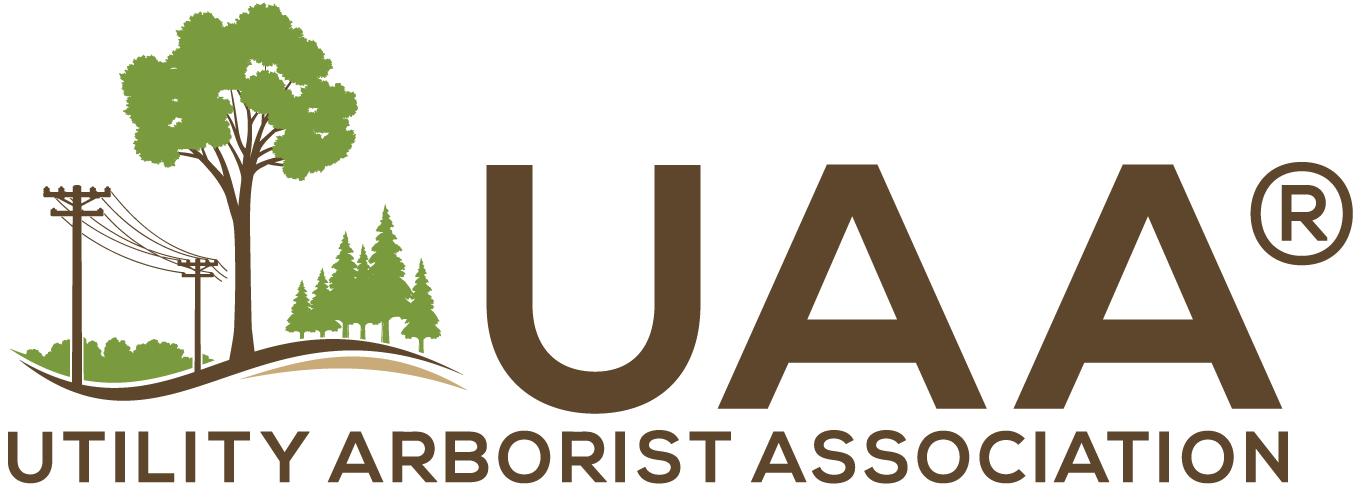
 Cody is the Membership Office Coordinator for the Utility Arborist Association, where she supports membership operations with a focus on organization and engagement. She blends her experience in organizing systems, interpreting data, and working closely with people to support both the day-to-day and big-picture needs of the UAA.
Cody is the Membership Office Coordinator for the Utility Arborist Association, where she supports membership operations with a focus on organization and engagement. She blends her experience in organizing systems, interpreting data, and working closely with people to support both the day-to-day and big-picture needs of the UAA. Sam joins the UAA crew with over a decade of non-profit experience behind her. As our Partnership Coordinator, her focused efforts on building relationships with diverse funders include crafting proposals, cultivating connections, and cohesively earning dedicated sponsors to support the sustainability of UAA substantially and empowering our programs. Well equipped with professional skills which include program development, public speaking, proposal writing, donor relations, working with diverse stakeholders, coalition building, and public-facing service. Sam’s educational background includes a BS in Animal Ecology with a minor in Animal Science, and a MA in Philanthropy and Non-profit Development.
Sam joins the UAA crew with over a decade of non-profit experience behind her. As our Partnership Coordinator, her focused efforts on building relationships with diverse funders include crafting proposals, cultivating connections, and cohesively earning dedicated sponsors to support the sustainability of UAA substantially and empowering our programs. Well equipped with professional skills which include program development, public speaking, proposal writing, donor relations, working with diverse stakeholders, coalition building, and public-facing service. Sam’s educational background includes a BS in Animal Ecology with a minor in Animal Science, and a MA in Philanthropy and Non-profit Development.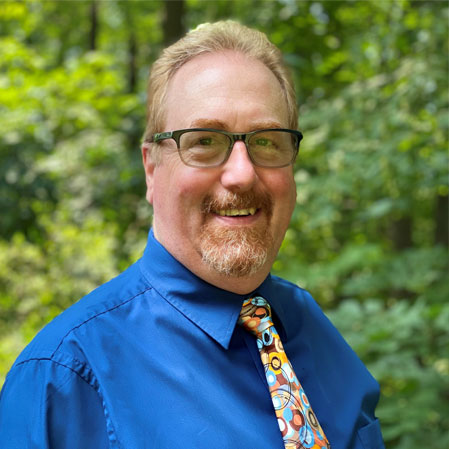 Fallon is a Utility Arborist and Executive Director of the Utility Arborist Association. Prior to his current role he was responsible for leading vegetation management programs across several upper Midwest states on behalf of a large investor-owned utility. He’s also been an adjunct professor at the University of Wisconsin-Stevens Point, where he facilitated the
Fallon is a Utility Arborist and Executive Director of the Utility Arborist Association. Prior to his current role he was responsible for leading vegetation management programs across several upper Midwest states on behalf of a large investor-owned utility. He’s also been an adjunct professor at the University of Wisconsin-Stevens Point, where he facilitated the 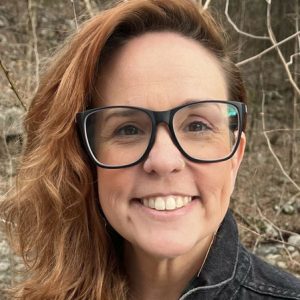 Crystal started her career in the Interior Design space but soon found herself
Crystal started her career in the Interior Design space but soon found herself  Craig works for Pacific Gas and Electric as Principal Safety Program Manager in Land Management. His career spans 30 years in the utility industry serving numerous roles. He is an ISA Certified Arborist, Utility Specialist, and hold his TRAQ and is a TCIA Certified TreeCare Safety Professional. Craig has been engaged and involved in the UAA for many years, starting back in 2008. He then wanted more so he ran for UAA President and was elected in 2014. Today, Craig looks back over his 30-year career and wouldn’t change a thing, he’s made life-long friends and considers many as mentors. He also claims he would not be where is in his career if it weren’t for these people, and pledges to pay it forward to support others in their success.
Craig works for Pacific Gas and Electric as Principal Safety Program Manager in Land Management. His career spans 30 years in the utility industry serving numerous roles. He is an ISA Certified Arborist, Utility Specialist, and hold his TRAQ and is a TCIA Certified TreeCare Safety Professional. Craig has been engaged and involved in the UAA for many years, starting back in 2008. He then wanted more so he ran for UAA President and was elected in 2014. Today, Craig looks back over his 30-year career and wouldn’t change a thing, he’s made life-long friends and considers many as mentors. He also claims he would not be where is in his career if it weren’t for these people, and pledges to pay it forward to support others in their success. Jodie Braskich is an experienced professional in the utility industry with a strong background in supply chain and vegetation management. With over 18 years of industry expertise, Jodie continues to contribute her time and knowledge to the continuous improvement of the professional field of UVM. She has been a member of the UAA since 2007.
Jodie Braskich is an experienced professional in the utility industry with a strong background in supply chain and vegetation management. With over 18 years of industry expertise, Jodie continues to contribute her time and knowledge to the continuous improvement of the professional field of UVM. She has been a member of the UAA since 2007.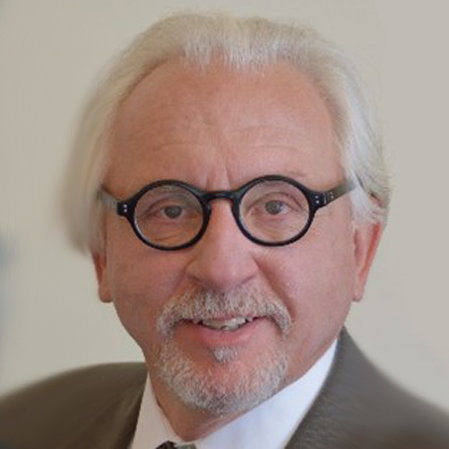 A winner of the David H Nabi Award for dedication and service, Dr. Robert Vanderhoof earned his Ph.D. from the College of Forest Resources at Mississippi State University in 1995. A veteran natural resource manager, Robert spent 15 years as Florida’s Deer Management Section Chief during which time he coordinated range management activities across Florida’s seven-million-acre wildlife management area system.
A winner of the David H Nabi Award for dedication and service, Dr. Robert Vanderhoof earned his Ph.D. from the College of Forest Resources at Mississippi State University in 1995. A veteran natural resource manager, Robert spent 15 years as Florida’s Deer Management Section Chief during which time he coordinated range management activities across Florida’s seven-million-acre wildlife management area system.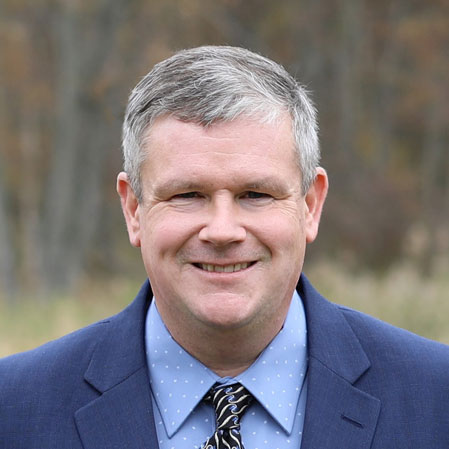
 Cindy is the Senior Director, Vegetation Management Services and she manages departments responsible for maintaining vegetation in REC’s rights-of-way with the goal of reducing exposure of the electric grid to tree caused outages while encouraging habitat and species diversity. Cindy also has a consulting business, EcoAcumen, LLC that focuses on residential, commercial and government clients.
Cindy is the Senior Director, Vegetation Management Services and she manages departments responsible for maintaining vegetation in REC’s rights-of-way with the goal of reducing exposure of the electric grid to tree caused outages while encouraging habitat and species diversity. Cindy also has a consulting business, EcoAcumen, LLC that focuses on residential, commercial and government clients. Kimberly Laing has had an exciting career in the energy industry, gaining valuable experience in various areas for almost 20 years. During her career, she has worked with numerous customers worldwide in a diverse cross-disciplined technical environment. She has extensive experience working with utilities, asset owners, equipment manufacturers, and consultants to facilitate transmission and distribution projects. Kimberly is particularly passionate about Utility Vegetation Management and its vital role in delivering safe and reliable power.
Kimberly Laing has had an exciting career in the energy industry, gaining valuable experience in various areas for almost 20 years. During her career, she has worked with numerous customers worldwide in a diverse cross-disciplined technical environment. She has extensive experience working with utilities, asset owners, equipment manufacturers, and consultants to facilitate transmission and distribution projects. Kimberly is particularly passionate about Utility Vegetation Management and its vital role in delivering safe and reliable power. Josh Beaver is currently senior vice president of Eocene Environmental Group, a utility vegetation management (UVM) consulting and operations firm. Josh has more than two decades of experience within the UVM industry. He is currently responsible for relationship management and oversight of long-term UVM contracts throughout the United States and Canada. He considers customer and community communication to be vital aspects of his role, and he has a proven record of success working with utilities.
Josh Beaver is currently senior vice president of Eocene Environmental Group, a utility vegetation management (UVM) consulting and operations firm. Josh has more than two decades of experience within the UVM industry. He is currently responsible for relationship management and oversight of long-term UVM contracts throughout the United States and Canada. He considers customer and community communication to be vital aspects of his role, and he has a proven record of success working with utilities. Sara Dreiser is a Senior Program Manager with ComEd. She works with a team to oversee ComEd’s routine cycle maintenance and ComEd’s interruption investigation programs. She has been working in the Vegetation Management industry for close to 15 years.
Sara Dreiser is a Senior Program Manager with ComEd. She works with a team to oversee ComEd’s routine cycle maintenance and ComEd’s interruption investigation programs. She has been working in the Vegetation Management industry for close to 15 years. Matt Goff is a Transmission Vegetation Manager at Georgia Power Company. He lives in Brookhaven, GA with his wife, two daughters, and the family’s two dogs Sam, and Payton. For leisure, he enjoys sports with his family, bird hunting, and salt-water fishing.Matt holds a BSFR from the University of Georgia in Forest Resource Management and he graduated in 1997. He has worked in the vegetation management industry for 26 years. His work experience includes six years as a procurement forester for a forest products manufacturer, and 20 years in the utility vegetation management industry with Georgia Power.
Matt Goff is a Transmission Vegetation Manager at Georgia Power Company. He lives in Brookhaven, GA with his wife, two daughters, and the family’s two dogs Sam, and Payton. For leisure, he enjoys sports with his family, bird hunting, and salt-water fishing.Matt holds a BSFR from the University of Georgia in Forest Resource Management and he graduated in 1997. He has worked in the vegetation management industry for 26 years. His work experience includes six years as a procurement forester for a forest products manufacturer, and 20 years in the utility vegetation management industry with Georgia Power.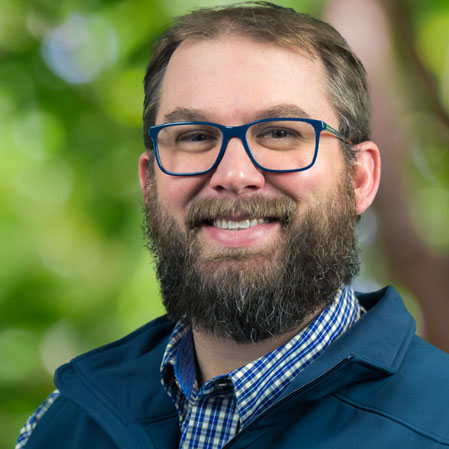 Brandon graduated from Minnesota State University–Mankato with a B.S. in Geography. Brandon has been with Rainbow Tree Company since 2009 and has gained experience in several roles, including Business Developer for our utility products division, GIS Tree Inventory Analyst, and Technical Arborist. Brandon has been the Director of VM Services, the fastest growing division inRainbow Tree Company, since 2012.
Brandon graduated from Minnesota State University–Mankato with a B.S. in Geography. Brandon has been with Rainbow Tree Company since 2009 and has gained experience in several roles, including Business Developer for our utility products division, GIS Tree Inventory Analyst, and Technical Arborist. Brandon has been the Director of VM Services, the fastest growing division inRainbow Tree Company, since 2012.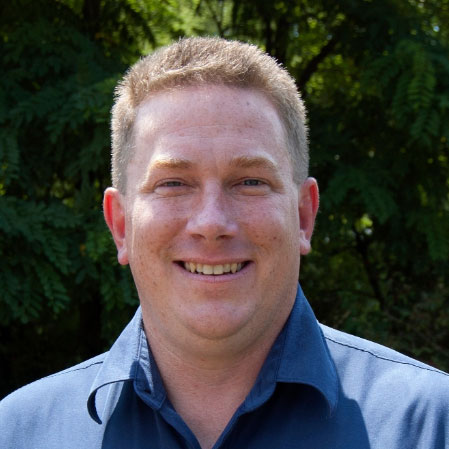 Jim Neeser is a business developer for the Davey Resource Group, a division of the Davey Tree Expert Company. Jim primarily works with utility companies to provide innovative and customized solutions. Jim earned his AA from Vermillion Community College in 1997 and his BS in Forestry with an emphasis on Hydrology and Soils from the University of Minnesota in 2000. Jim is an ISA Certified Arborist with the Utility Specialist endorsement. Jim has been involved in the UAA training committee for nearly a decade as a past chairman and is currently the treasurer and Champion of the finance committee. Jim spent his first 7 years in the industry as a field arborist in the commercial and utility markets. The last 10 years, Jim has been working with utility companies to enhance their Integrated Vegetation Management programs. Jim’s other interests include spending time with his family, sports, hiking, fishing and coin collecting. Jim is also active with the Boy Scouts of America as an Eagle Scout. Jim lives in Forest Lake, MN with his wife and 2 children.
Jim Neeser is a business developer for the Davey Resource Group, a division of the Davey Tree Expert Company. Jim primarily works with utility companies to provide innovative and customized solutions. Jim earned his AA from Vermillion Community College in 1997 and his BS in Forestry with an emphasis on Hydrology and Soils from the University of Minnesota in 2000. Jim is an ISA Certified Arborist with the Utility Specialist endorsement. Jim has been involved in the UAA training committee for nearly a decade as a past chairman and is currently the treasurer and Champion of the finance committee. Jim spent his first 7 years in the industry as a field arborist in the commercial and utility markets. The last 10 years, Jim has been working with utility companies to enhance their Integrated Vegetation Management programs. Jim’s other interests include spending time with his family, sports, hiking, fishing and coin collecting. Jim is also active with the Boy Scouts of America as an Eagle Scout. Jim lives in Forest Lake, MN with his wife and 2 children. Erin Creekmur has been in the UVM industry for over 20 years. After graduating with a Bachelors in Botany from Northern Arizona University she relocated to Northern California to start her professional career. Starting as a consulting utility pre-inspector with Western ECI she quickly moving up to the ranks to Supervisor under the tutelage of folks like Nelson Money. In 2004, Erin joined PG&E as a Quality Assurance Auditor for the VM program. Eventually becoming the Program Manager for the North Coast Division, helping stand up the beginnings of CEMA as the Emergency Drought Response Initiative Lead for the Enhanced Inspection & Mitigation Program, targeting off-cycle hazard trees across the system. In 2015, Erin moved back to her home state of Arizona and took the role of Division Supervisor with Arizona Public Service, managing both transmission and distribution UVM programs out of the Flagstaff area. As part of her role with APS Forestry Fire and Resource Management Department, Erin had responsibility for creating a Hazard Tree Mitigation program. maintaining APS’s ROW Stewardship Accreditation, FERC reporting, and the Transmission Lidar program. In 2021, Erin took a shift in her career and is now Supervising the Customer Construction and Design team for APS, expanding her overall understanding of the Utility industry. Erin continues to maintain her ISA Utility Specialist Certification and TRAQ. She has also completed certifications in both Six Sigma and Lean Sigma Green Belt through accredited universities. In addition to her current service on the UAA Board of Directors, Erin spent the last 6 years as an officer with the Arboretum at Flagstaff Board of Directors. In her free time, you can find Erin in the woods taking pictures of native plants and beautiful western landscapes.
Erin Creekmur has been in the UVM industry for over 20 years. After graduating with a Bachelors in Botany from Northern Arizona University she relocated to Northern California to start her professional career. Starting as a consulting utility pre-inspector with Western ECI she quickly moving up to the ranks to Supervisor under the tutelage of folks like Nelson Money. In 2004, Erin joined PG&E as a Quality Assurance Auditor for the VM program. Eventually becoming the Program Manager for the North Coast Division, helping stand up the beginnings of CEMA as the Emergency Drought Response Initiative Lead for the Enhanced Inspection & Mitigation Program, targeting off-cycle hazard trees across the system. In 2015, Erin moved back to her home state of Arizona and took the role of Division Supervisor with Arizona Public Service, managing both transmission and distribution UVM programs out of the Flagstaff area. As part of her role with APS Forestry Fire and Resource Management Department, Erin had responsibility for creating a Hazard Tree Mitigation program. maintaining APS’s ROW Stewardship Accreditation, FERC reporting, and the Transmission Lidar program. In 2021, Erin took a shift in her career and is now Supervising the Customer Construction and Design team for APS, expanding her overall understanding of the Utility industry. Erin continues to maintain her ISA Utility Specialist Certification and TRAQ. She has also completed certifications in both Six Sigma and Lean Sigma Green Belt through accredited universities. In addition to her current service on the UAA Board of Directors, Erin spent the last 6 years as an officer with the Arboretum at Flagstaff Board of Directors. In her free time, you can find Erin in the woods taking pictures of native plants and beautiful western landscapes. Renée is our Member Services Manager. She is available to UAA members for questions on committee assignments, educational opportunities, scholarships, CEU questions, and any other assistance.
Renée is our Member Services Manager. She is available to UAA members for questions on committee assignments, educational opportunities, scholarships, CEU questions, and any other assistance.